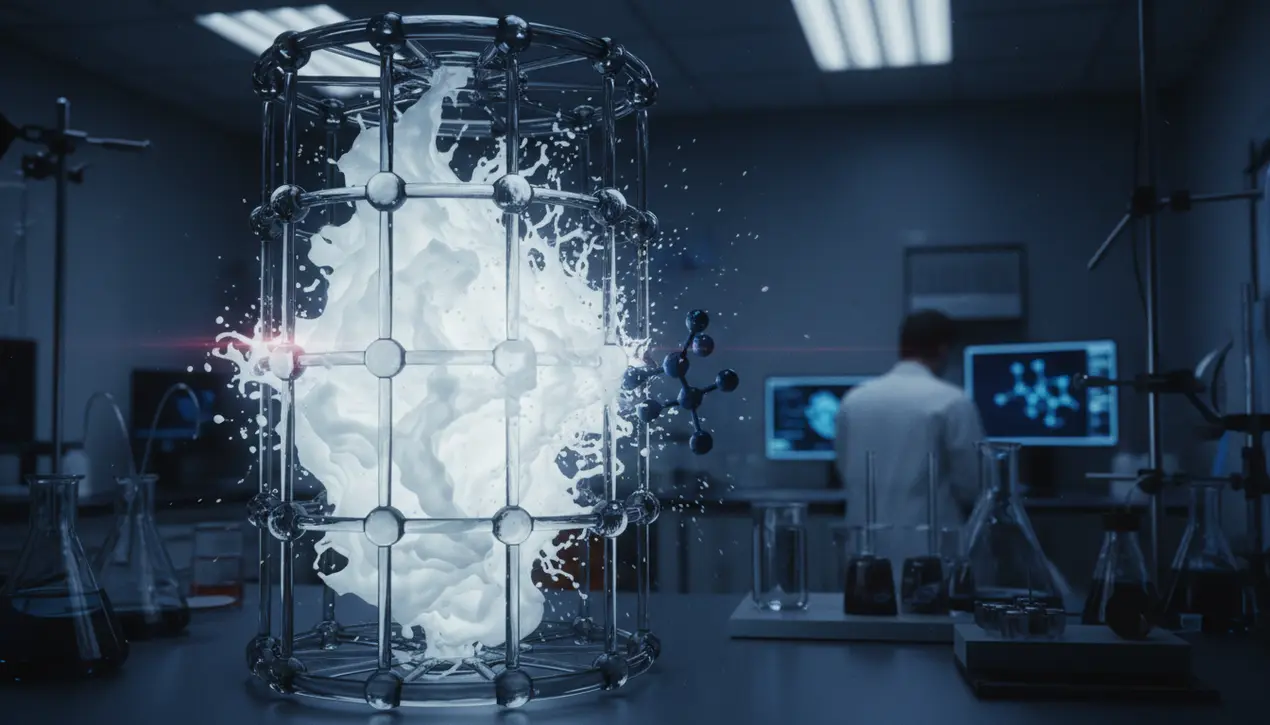
SciencechemistryMaterials Chemistry
Escape of Pressurized Water Unlocks a Potent New Molecular Bonding Force
TH
Thomas Green
3 hours ago7 min read1 comments
A groundbreaking study from the Karlsruhe Institute of Technology and Constructor University has identified a powerful new molecular force driven by the explosive escape of highly pressurized water. Published in a landmark paper, the research demonstrates that water confined in nanoscale molecular cavities exists in a 'highly energetic' state, exerting immense outward pressure.The critical discovery occurs when a guest molecule approaches this space: the trapped water doesn't just move aside, but is forcibly ejected in a concerted burst. This release of energy is not a passive byproduct; it actively powers the formation of a significantly stronger bond in the cavity left behind.The team provided the first definitive proof of this mechanism through advanced experiments and theoretical models. This finding upends fundamental concepts in supramolecular chemistry and hydrophobic interactions, which are essential to biological functions like protein folding and drug binding.The implications are vast. For pharmaceuticals, it enables the design of drugs that use this water-driven force to bind to targets with unparalleled strength and specificity, potentially creating more effective therapies with fewer side effects.In materials science, it paves the way for a new generation of responsive materials for applications ranging from advanced filtration to self-healing structures. This research transforms our view of water from a passive solvent to an active, energetic participant in molecular engineering, revealing the profound forces at work in the hidden nanoscale spaces where biology and chemistry converge.
#featured
#molecular force
#high-energy water
#confined water
#molecular cavities
#KIT
#Constructor University
#chemical bonds
Stay Informed. Act Smarter.
Get weekly highlights, major headlines, and expert insights — then put your knowledge to work in our live prediction markets.
Related News
Comments
Loading comments...
© 2025 Outpoll Service LTD. All rights reserved.